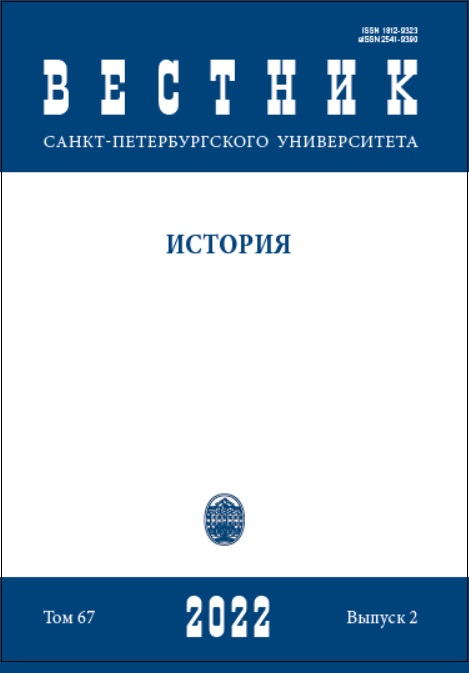Славянские названия месяцев в Древней Руси
DOI:
https://doi.org/10.21638/11701/spbu02.2022.201Аннотация
В статье исследуются славянские/языческие названия месяцев, бытовавшие в Древней Руси XI–XIV вв. Автор систематизирует источники, в которых содержатся упоминания об этих названиях. Эти источники могут быть разделены на три группы по количеству упоминаний в них исследуемых названий. Первая группа — это месяцесловы, которые, как правило, составляют единый комплекс с богослужебными Евангелиями-апракосами. В них мы находим более всего упоминаний славянских названий месяцев. Вторая группа: древнерусские нарративные источники. Источники этой группы в данном случае представлены одним памятником — «Повестью временных лет» — и единственным упоминанием славянского названия («грудень» — ноябрь). Третья группа объединяет разнообразные источники, общий признак которых — происхождение и бытование в простонародной среде. Это источники, связанные с повседневностью. В данную категорию в рамках статьи отнесены берестяные грамоты, епитимийники, граффити и пр., вовсе не содержащие упоминаний славянских названий и, более того, практически не содержащие следов месячного счета как такового. Автор приходит к выводу, что славянские/языческие названия месяцев появились на Руси вместе с древнеболгарскими (церковнославянскими) рукописями и не имеют прямой связи с местными восточнославянскими обычаями. Древнеболгарские книжники, прошедшие выучку в среде, ценностные ориентиры которой были заложены кирилло-мефодьевской школой, имели высокую познавательную культуру и широкие взгляды. Это позволило им отнестись с уважением к собственному языческому наследию и зафиксировать болгарские названия месяцев на страницах месяцесловов. На Руси ситуация была иная. Борьба с язычеством не была завершена. Это не позволяло русским священникам впускать языческие элементы в христианскую бытовую культуру. На повседневном уровне люди либо избегали пользоваться помесячным счетом или пользовались латинскими названиями, принятыми Русской православной церковью. Славянские названия месяцев на Руси встречаются только в текстах болгарского происхождения.
Ключевые слова:
Древняя Русь, календарь, просинец, сечень, сухий, березол, травный, изок, червен, зарев, рюен, листопад, груден, студеный
Скачивания
Библиографические ссылки
Загрузки
Опубликован
Как цитировать
Выпуск
Раздел
Лицензия
Статьи журнала «Вестник Санкт-Петербургского университета. История» находятся в открытом доступе и распространяются в соответствии с условиями Лицензионного Договора с Санкт-Петербургским государственным университетом, который бесплатно предоставляет авторам неограниченное распространение и самостоятельное архивирование.





